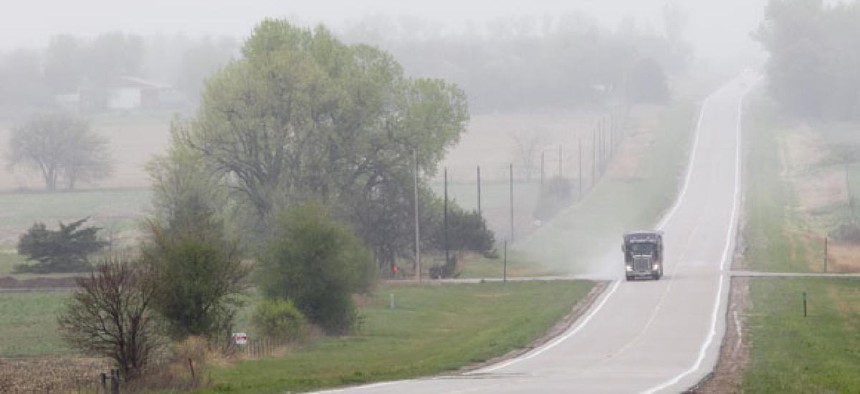
The proposed route for the pipeline will cross Nebraska. Nati Harnik/AP
TransCanada reapplies for Keystone permit
Political debate over the pipeline will likely reignite.
TransCanada announced on Friday that it has submitted a new application for a permit for the northern portion of the controversial Keystone XL pipeline that would bring Canadian tar-sands oil from Alberta to Steele City, Neb., reigniting the divisive political debate over the project.
"Our application for a Presidential Permit builds on more than three years of environmental review already conducted for Keystone XL," TransCanada CEO Russ Girling said in a statement, noting that 10,000 pages of review documents have already been completed for the project. "It was the most comprehensive process ever for a cross-border pipeline and that work should allow our cross-border permit to be processed expeditiously and a decision made once a new route in Nebraska is determined."
The Obama administration earlier this year denied a permit for TransCanada to build the full pipeline running from Canada down to the Gulf Coast, but President Obama did give the nod to the southern portion of the project, which will run from Cushing, Okla., to Port Arthur, Texas, to help ease a bottleneck in the nation's pipeline system.
Since then, TransCanada has unveiled a new route for the northern portion of the pipeline that would go around the sensitive Sandhills region in Nebraska. Obama had delayed the project last fall because of environmental concerns about the route through Nebraska. The Nebraska Legislature and the state’s Republican governor, Dave Heineman, have signed off on legislation that will allow the company to work with Nebraska's Department of Environmental Quality in finalizing this new route.
TransCanada said on Friday that it still plans to begin construction of the pipeline in the first quarter of 2013, noting the “firm, long-term” contracts the company has in place to carry more than 500,000 barrels of oil per day in the pipeline. TransCanada expects to begin construction of the $2.3 billion southern portion of the project this summer and complete it by mid to late 2013, with the full project’s completion slated for late 2014 or early 2015. The completed pipeline is meant to bring Canadian tar-sands oil as well as Bakken crude oil from Montana and North Dakota down to U.S. refineries along the Gulf Coast.
For its part, the State Department, which is tasked with evaluating the project because it crosses an international border, said that it has received TransCanada’s permit application and “will consider this new application on its merits.”
As it has in the past, the State Department said that it will be hiring a third-party contractor to assist the department in reviewing the existing Environmental Impact Statement for the pipeline project as well as any new analysis. In addition, State said that it plans to cooperate with the state of Nebraska and other local agencies in its process evaluating whether the pipeline is in the national interest. Nebraska’s own state review of the new route is expected to take six to nine months, according to the State Department.
State said that it will conduct its new review as efficiently as possible, using the existing analysis available from the company’s previous application and corresponding environmental review.
When it becomes available, the new application can be found on State’s Keystone XL project website: www.keystonepipeline-xl.state.gov.






